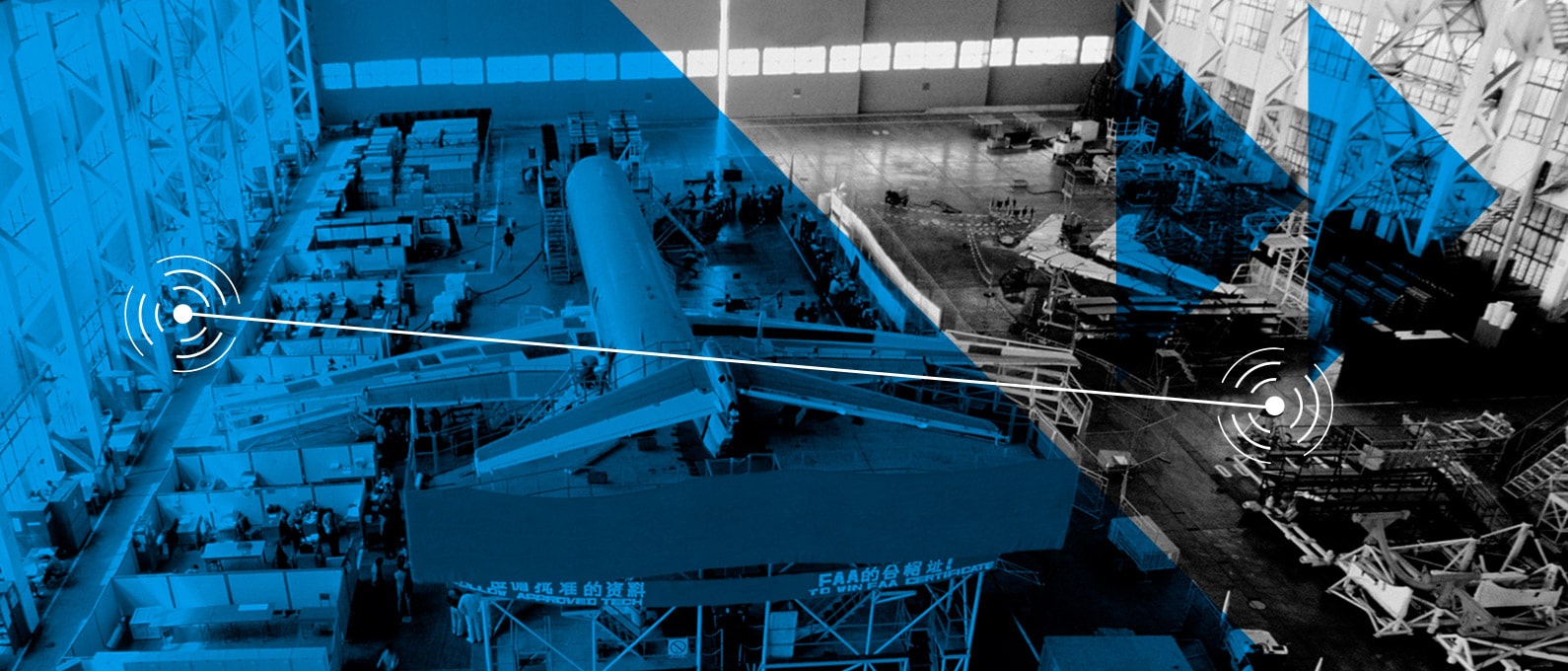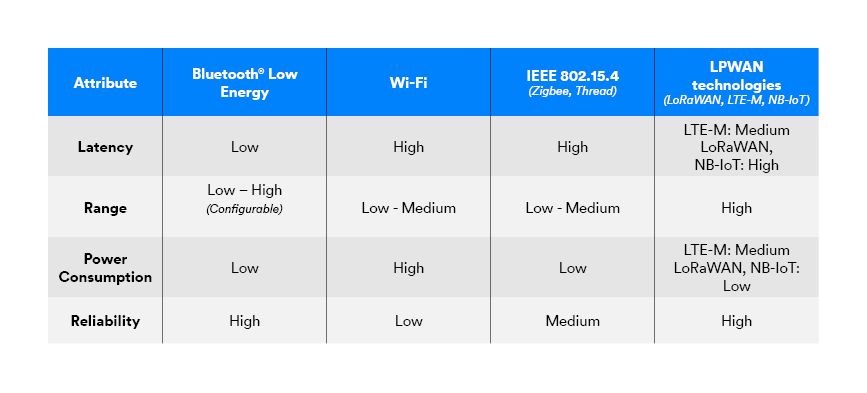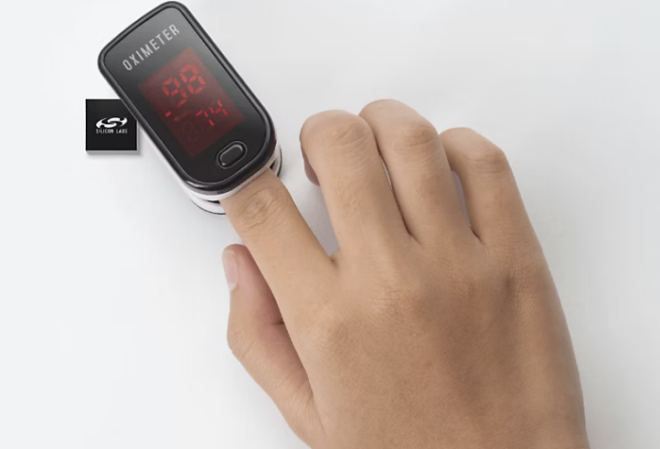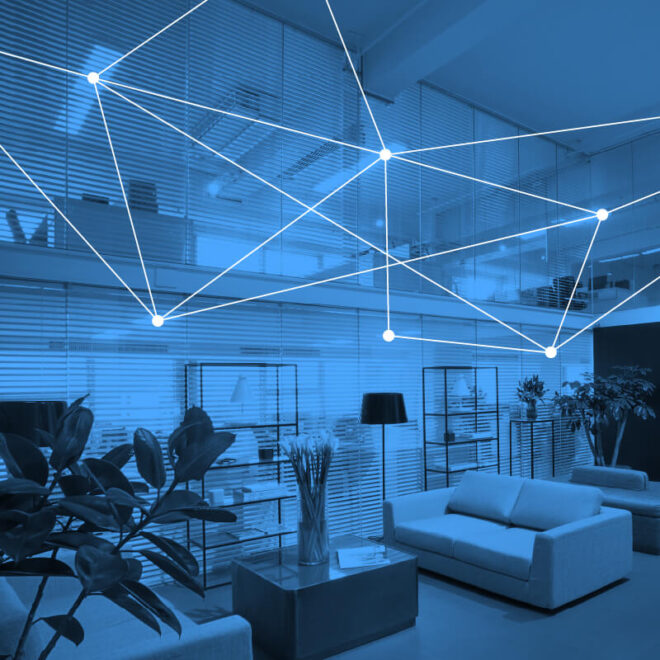In this post, we continue our series on the comparison between the different wireless connectivity options for IoT applications. In the previous two parts, we covered the different wireless technologies at a high-level and compared them in terms of the most common attributes for utilizing them in an IoT application.
Starting with this article, and in the subsequent ones, we’ll cover specific IoT applications and compare the wireless technologies in terms of the attributes that make the most sense for each specific vertical. In this article, we’ll be going over the application of Condition Monitoring.

What Is Condition Monitoring and Why Is It Deployed?
The basic principle of condition monitoring is to continuously monitor the health of a machine or a piece of equipment. The goal is to be able to predict when a significant change in one or more parameters of the equipment’s condition is likely to cause a fault later. This concept is commonly known as predictive maintenance.
Condition monitoring requires carefully performing the following in order to detect irregular changes and trends that develop over time:
- Choosing the parameters to monitor on a machine
- Regular measurement of the parameters
- Choosing the interval to take the measurements
This is often used on rotating equipment of mechanical nature like compressors, pumps, motors, etc.
The most common applications where condition monitoring is employed include industrial, manufacturing, smart building systems, and transportation. Some of the most common parameters monitored include temperature, humidity, and vibration, pressure (for hydraulic or other leakage), electrical current, and voltage (for changes in equipment as they age).
Not all machines require continuous monitoring of the key parameters, and, in these cases, occasional parameter measurement may be enough. The decision is usually based on the type and criticality of the piece of equipment in question. Failures usually occur in individual components, so the monitoring also needs to focus on the relevant specific failure modes of the critical components.
Some of the benefits of predictive maintenance include:
- Avoiding downtime of a specific machine, leading to higher production efficiency and increased costs savings
- Early detection of developing faults and addressing them before they develop into major failures
- Performing maintenance only when needed instead of always performing it at a certain interval, whether needed or not
- Accurately detecting the causes of developing faults, making the maintenance process more efficient
The Most Critical Attributes for Wireless Technologies Utilized in Condition Monitoring
There are a few key attributes that need to exist in wireless technologies utilized for condition monitoring. In our series, we’ll focus on the topmost critical attributes for wireless technologies utilized in each of the applications being studied. For the application of condition monitoring, the most important attributes are reliability, latency, range, and power consumption.
Let’s cover each of these in detail and explain why they are crucial in the case of condition monitoring.
Reliability
Reliability of the wireless networks in condition monitoring applications is extremely important. Having sensor data points transmitted over a network that is not reliable could cause more harm than good. This is especially true for applications that are time sensitive.
Wireless networks employ various techniques to increase reliability. Some of these are at the protocol level while others are at design and implementation. The most common ones include:
- Data retransmissions in case of errors, which relies on tracking the sequencing of data packets being transmitted and received
- Error detection and correction (e.g. data redundancy, forward error correction techniques, etc.)
- Increasing transmit power at the transmitter
- Increasing receiver sensitivity
- Multiple antennas at the receiver
- Frequency hopping to avoid noisy channels
Not all wireless network technologies are created equal, and some focus on reliability and robustness more than others. So, be sure to consider this parameter carefully when choosing a wireless network technology and really understand what mechanisms are utilized to achieve the level of reliability needed for your system.
![]()
FEATURED INFOGRAPHIC
Bluetooth Location Services
See 8 use cases for enhancing building efficiencies and creating a better visitor experience, discover new data that supports the latest trends and forecasts, and find out what’s driving the rapid adoption of location services solutions.
Latency
When monitoring the health of a component, it’s not only important to get an accurate measurement of the parameters in question but also to be able to deliver these measurements in a timely manner. This is where latency comes in.
In this context, latency is the time it takes for a data packet to be transmitted from one node to another within a wireless network. Another use case where latency becomes very important is when different sensor measurements on different devices need to be synchronized.
Latency is usually measured in milliseconds, and, in wireless networks, it is usually not a fixed value. Rather, it depends on the configuration and the choice of different parameters for the network.
Achieving a low latency usually comes with a sacrifice in power consumption, so the choice of parameters that affect latency should be chosen carefully to strike a balance between an acceptable latency while still achieving low power consumption – this is especially true for battery-operated devices.
Keep in mind that latency is also greatly affected by the packet size being transmitted, so reducing the packet size will lead to lower latency values.
Range

Range is defined as the maximum distance between a transmitter and receiver at which reliable communication is still achievable with minimal packet loss. Range is very important for condition monitoring applications that span large spaces such as in a manufacturing plant.
The maximum range of a wireless network mainly depends on the following factors:
- Transmit power
- Receiver sensitivity
- The environment surrounding the network (such as humidity, human bodies, fixed obstacles, and noise from other RF signals operating in the same spectrum)
- The number and spacing of nodes in a mesh network
Keep in mind that there are often regulations and rules restricting the transmit power output of a device, depending on the region and country of operation. Specifications of low-power wireless technologies also typically restrict the maximum transmit power to limit power consumption.
Power Consumption
In most condition monitoring applications, the implementor does not have the luxury of replacing the existence machinery with new equipment that has the wireless sensors built in. Rather, more commonly, the task involves retrofitting the equipment with after-market wireless sensor devices to measure the key parameters.
Due to challenges with installation and mounting the sensor devices to the components, these devices will typically be battery powered. So, power consumption is a key parameter that needs to be carefully considered.
There are many factors that affect power consumption, some of which include:
- Frequency of data transmission (radio-on time)
- Amount of data transmission (how long the radio is active)
- Transmit power
- The surrounding environment, and its effect on data retransmissions
- Configuration of certain network parameters
Low-power wireless technologies typically target low duty cycle data applications since the radio is usually the highest power-consuming component of the chipset (the longer the radio is on, the higher the power consumption of the device).
Comparison of Wireless Technologies Suitable for Condition Monitoring
So, based on the attributes we mentioned before: reliability, latency, range, and power consumption, which of the wireless technologies make the most sense for the application of condition monitoring?
These are the most suitable wireless technologies for condition monitoring:
- Bluetooth® Low Energy
- IEEE 802.15.4-based technologies (Thread, Zigbee)
- Wi-Fi
- LPWAN technologies (cellular and non-cellular based): LoRaWAN, LTE-M, NB-IoT
Other worthy mentions include WirelessHART and ISA 100.11a, which are both partially based on the IEEE 802.15.4 standard.
WirelessHART is a wireless protocol that was developed with the goal of being a multi-vendor and interoperable standard. It was designed specifically for the industrial field and supports a time-synchronized, self-healing mesh architecture. ISA 100.11a was also developed with a focus on the automation and control environment and supports mesh topology as well.
Now, let’s compare the most common technologies in terms of the key attributes we listed:

Further Discussion
It’s important to note that even within the application of condition monitoring, there are various use cases where one technology may be more appropriate than another for that specific use case.
For example, for applications that require high-bandwidth and large data transfers, Wi-Fi makes the most sense out of the listed technologies. LTE-M is also suitable for these applications, whereas the rest of the technologies will probably not satisfy the need.
If the application involves low-bandwidth and long-range deployments, such as outdoors and in rural areas, then LPWAN technologies make the most sense.
Finally, outside of these somewhat less common use cases within condition monitoring, Bluetooth® Low Energy provides the highest flexibility and a good mix of power consumption, latency, reliability, and range performance to satisfy the most needs.
![]()
STAY INFORMED
Bluetooth Email Updates
Stay up-to-date on what’s new with Bluetooth, and get the resources you care about, from newly released papers and case studies to developer study guides, videos, and more. Subscribe to receive timely, relevant emails that won’t overfill your inbox.




![ABI Growth Chart.png 815076338[1]](https://www.bluetooth.com/wp-content/uploads/2024/03/ABI_Growth_Chart.png_8150763381-660x384.png)



















